The Prisoner Role Playing Game: Be Playing You?
Strange Licensed Role Playing Games Selection #6
Mechanical Complexity Meets Narrative Complexity
In 1967 ITC Entertainment distributed one of the strangest television shows to ever be produced. It featured a surreal setting with a storyline reminiscent of Kafka’s The Trial or Arthur Koestler’s Darkness at Noon, with maybe just a dash of John le Carré’s The Spy Who Came in from the Cold. The show was called The Prisoner and it was created by, and starred, Patrick McGoohan who starred in the spy show Danger Man (known as Secret Agent in the US). McGoohan pitched the idea for The Prisoner while he was still working on Danger Man and many view the series as a thematic (if not literal) sequel to the spy show.
The Prisoner tells the tale of an unnamed British Intelligence agent who retires from a highly sensitive job and is subsequently kidnapped and relocated to a remote location called the Village. At the Village, the agent is given the name Number Six and is put through a variety of debriefing scenarios that range from the useful to the surreal. His sanity is tested and he has no way of knowing if he is being processed by his own government or by “the other side.” Each episode highlights the tension between the individual and the collective and the balance of individual rights and social responsibility. One of the things that makes the show so good is that it doesn’t provide an answer to this specific question, rather it prompts viewers to discuss the conflict and come to their own answer. The only answer that the show provides is that we are all Prisoners of our Circumstances.
As a science fiction and espionage show, it is fantastic. It captures perfectly the paranoia and despair of a post-Kim Philby world and the surreal elements allow the show to avoid being a mere product of its age. There are timeless questions in the conflicts and the show holds up remarkably well. The show was critically acclaimed when it was released in 1967 (in Canada and the UK) and 1968 (in the US), but it never broke into the top 30 rated shows in the Nielsen ratings. While it lacked a large viewership when it was first released, it has since acquired cult status and is beloved of cineastes and pop culture fans. Examples of its long lasting popularity include the fact that the show formed the basis of an Iron Maiden song, inspired my friend Doc Wyatt to create a series of action figures (yes I own them), and was adapted into a role playing game setting for the GURPS role playing game.
As much as I love The Prisoner as a show, I have to admit it’s a strange choice for a role playing game setting. Like many other games in this series, I wonder who this product was designed for. Sure, there are some role playing game fans who are fans of The Prisoner and there are some The Prisoner fans who play role playing games, but the Venn diagram of those two communities has got to be pretty small. That intersection gets even smaller when you use the GURPS rules set as the basis for game play.
The GURPS rules set was designed by Steve Jackson (the American Steve Jackson and not the English one who formed Games Workshop with Ian Livingstone) as the in house game for his company Steve Jackson Games. Jackson had previously designed The Fantasy Trip game for Metagaming and wanted to publish that game with his new company. Metagaming refused to sell him the rights at a reasonable price and Jackson eventually produced the GURPS game. If you’ve played The Fantasy Trip, then you can see immediately how GURPS is based on similar principles. Some central mechanics, such as rolling 3d6 to determine success or failure, are retained, but there are layers and layers of depth in GURPS that are nowhere to be found in The Fantasy Trip.
These differences stem from the fact that GURPS, unlike The Fantasy Trip, was created to be a game that could simulate any and all settings. It is a Generic Universal Role Playing System, a name that the game was given as a temporary name in development that somehow stuck when the game was published in 1986 in its first edition boxed set. That boxed set was quickly replaced by a second edition in 1987 and a third edition in 1988 and that third edition remained the stable version of the game until a fourth edition was published in 2004. While the release of three editions in two years might seem like a mistake, or at minimum a challenge to players, the rules are relatively unchanged from edition to edition. It wasn’t until the fourth edition that any really significant changes were made, but even that is largely backwards compatible to prior version of the game.
There is currently a free “lite” version of the GURPS game available that provides all of the basics needed for play, but the Basic Set books add a tremendous amount of granular detail to the game. That granular detail can be intimidating to new gamers if they don’t make sure to apply what I call “the first rule of GURPS.” That rule is to “only use the minimum number of rule necessary to accomplish your play goals.” If you apply this role, then the game is very simple and easy to understand and play. Add complexity as and when needed, but not before. You can read about the setting on the Steve Jackson Games website, but the book is out of print. You can find it at used game stores like Noble Knight Games and the price has come down recently because the game is so obscure.
On an interesting note, that ties in with my recent post on AI music, when I was researching the ratings for the show I did a Google search and the AI Overview was hilarious. It claimed that the show ended as the number one show when it was cancelled and that it’s co-stars Don Knotts and Frances Bavier received a total of six Emmy Awards. It was a very The Prisoner moment to read that description.
The surreal nature of the show makes for great TV, but could you imagine trying to maintain the level of paranoia and suspense of the show? How about maintaining that tension while telling your players that they are being chased by a giant glowing beach ball? I think that maybe Robin Laws or Kenneth Hite could run a Prisoner game, but that’s about it. Certainly the show inspired other role playing games like Over the Edge.
GURPS just seems like an odd and highly mechanical rules set to be using for a surreal setting. Then again, the GURPS The Prisoner sourcebook is really cool and one of the best sourcebooks for the show…period. It’s also how I found out about the show in the first place. Even with that caveatI don’t think that the GURPS rules set – which I love and which can do almost anything – fits the tone of the setting. If I were to do a modern day license for this property, I’d publish a game using the Skullduggery, Fiasco, Gumshoe, or possibly Hillfolk systems.
I can see the opening gaming session now…
“Where am I?”
“In the Village.“
“Cool…I attack No. 2 with my Battle Axe.”
“You are No. 2”
“D’oh!”
What do you think?
Be seeing you!



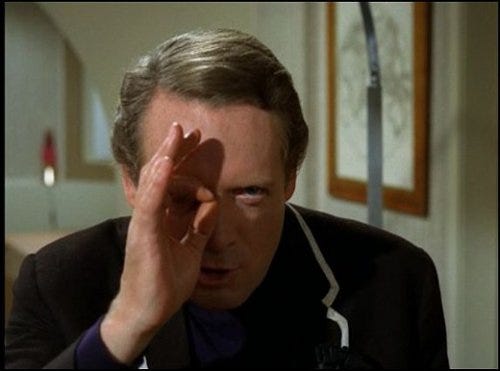
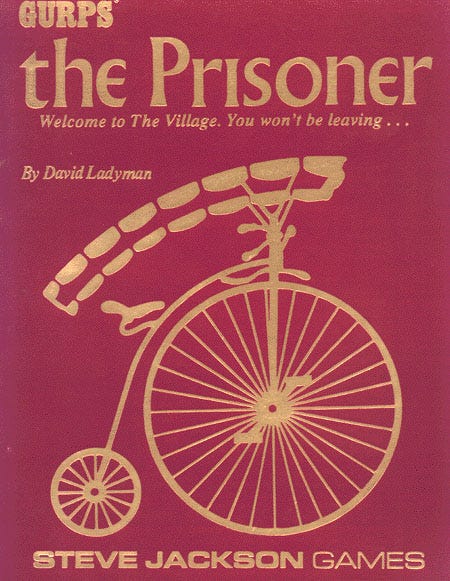
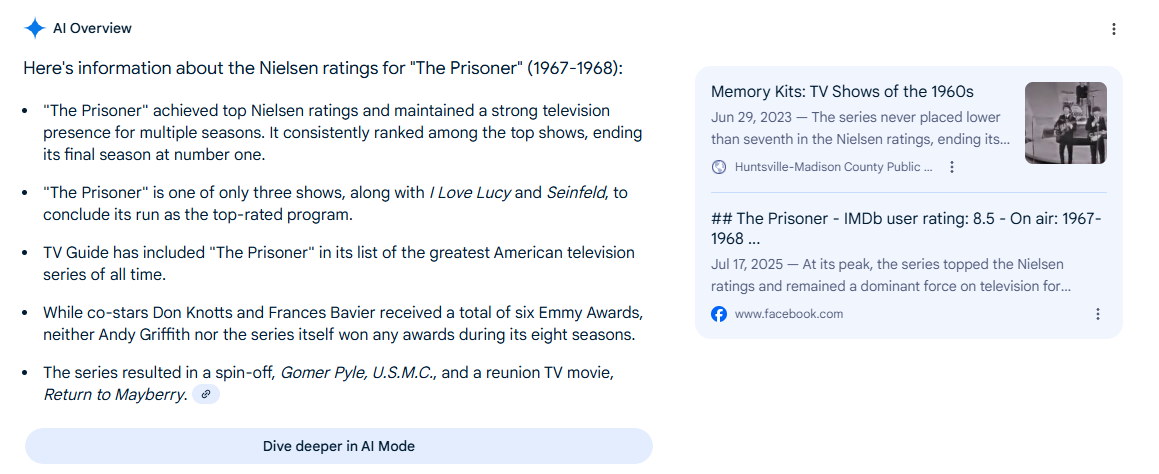
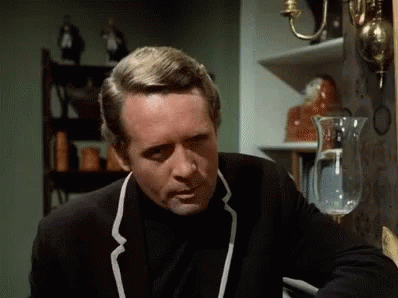


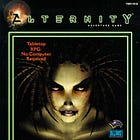


As an RPGer, a player of Steve Jackson Games, and a big fan of The Prisoner, I got this when it came out. In all those years, I've never played it, but I have read it several times. The book is excellent. If I ever did play it, I would start the players with a backstory. They've been established in The Village for a while, and they know some of the ins and outs. Maybe there is a new NPC coming in. I would have the players portray the support characters in the series, essentially.
The Prisoner is quite an interesting show. I remember I have seen a few episodes of it.